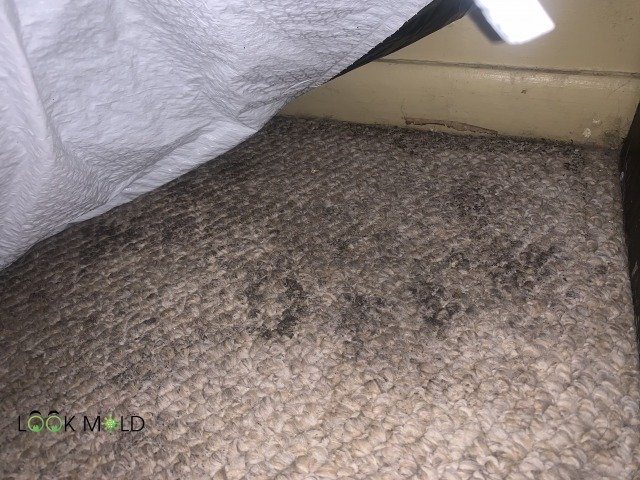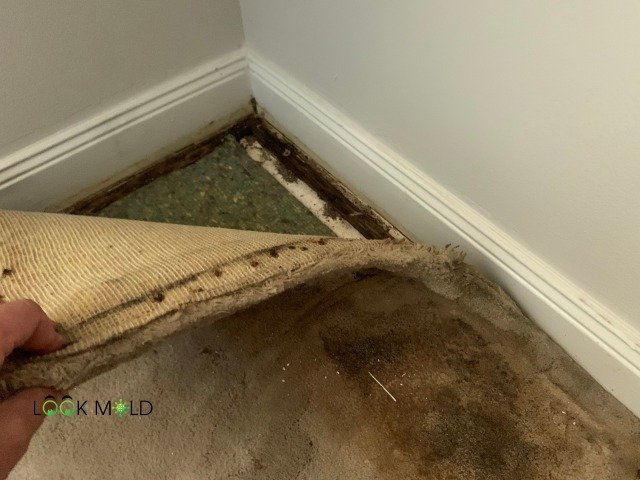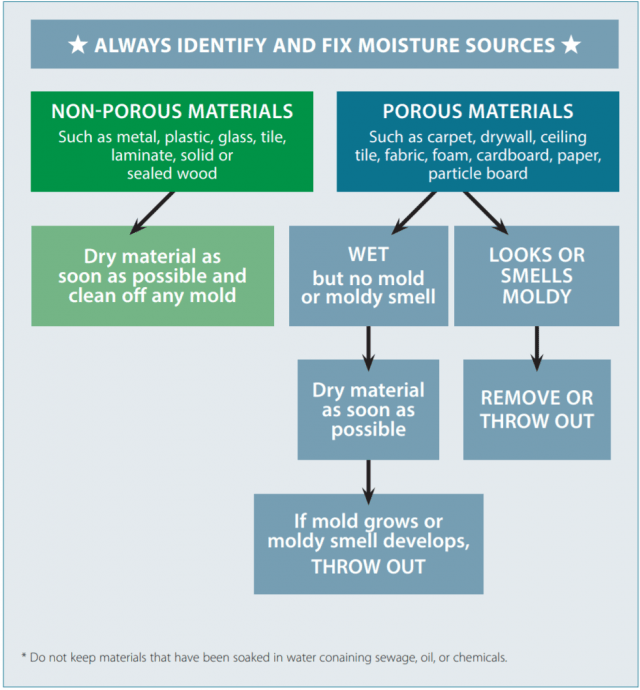Professional Mold Remediation Services
Don't Let Toxic Mold Put Your Family's Health at Risk
Stop mold damage before it spreads. Call now for a free, no-obligation estimate from a local remediation expert.
Free Estimate · Zero Obligation · Available 24/7
Mold On Carpet - How To Remove and Clean Mold on Carpet
Carpet is the preferred floor covering for many people, especially in bedrooms. It’s also one of the most cost-effective types of floor coverings. But what happens if you have mold on carpet? Is it easy to clean mold growing in carpets, or do you have to remove the carpet altogether?
These are great questions that will be answered…
But many variables come into place as there is no one universal answer.
When To Clean Mold From Carpet Vs. Removing The Carpet
When determining if a carpet mold should be cleaned or the carpet should be removed, it comes down to one thing: Water damage.
If mold growth is found on the carpet that has been water damaged due to a flood or water intrusion, the carpet should be discarded. If surface mold is present on the carpet caused by an un-clean or high humidity environment, the carpet can sometimes be cleaned, but fixing the source is crucial. Surface mold tends to grow in the dark and not well-ventilated rooms.
Poor ventilation means that there is no enough air circulation in your room. This, therefore, leaves the air moist and favoring mold growth. Carpets placed in poorly ventilated rooms such as basements can be susceptible to mold growth.
The California Department of Public Health recommends that wet building materials such as carpet be dried as soon as possible. However, they suggest that if a mold odor or visible mold growth appears at any point in time that the carpet should be discarded altogether.
Undoubtedly, if you suspect there is mold growth present in carpet in any capacity, it will always be easier to replace than ensuring you get rid of mold in the carpet by cleaning.
But…
The problem with that is replacing the carpet instead of cleaning is not always cost-effective. If you have the means to do it, replacing the carpet is the best way to ensure mold growth in carpet is not affecting the living environment of the home.
Cleaning Mold In Carpets During Mold Remediation
If a mold problem is present in a home where the mold spores have become aerosolized in an area where carpet is present, the cleaning of the carpet should be part of the mold remediation process even if it were not water damaged.
Carpet can act as a reservoir for particles such as fungal growth to settle in.
Even though you do not visibly see the mold because the spores can be microscopic, it can still be present within the carpet. Normal everyday vacuum cleaners will not be able to remove mold particles in a carpet because of the size of it.
Mold remediation professionals use a special kind of HEPA vacuum that can help remove mold spores and fragments, but even that can be unreliable in removing all the mold.
Cleaning Mold On A Carpet

Once you have determined that cleaning mold from a carpet is a doable option, there are a few ways to go about cleaning it. All of them will include using a cleaning agent. It is important to use a non-toxic cleaning agent if possible. It’s not recommended that bleach or any other biocide with high levels of toxicity is used. Bleach can also cause your carpet to discolor, so it’s best to avoid altogether as there are other options. Before you get started, you will have to ensure the cause of the mold has been resolved. If it was caused by any of the following:
- Roof leak
- Window leak
- Door leak
- Plumbing Leak
- Fish Tank Leak
- Etc.
The cause will need to be addressed or you are doing the work for no reason. The following is how to get rid of mold on carpet without removing it:
- Step 1: Make sure you wear gloves, a mask to cover the mouth and nose, and goggles. Even though you should be using a non-toxic detergent, you can never be too careful.
- Step 2: Get a small bucket or bowl and fill with a biodegradable cleaning agent or simple soap and water. Mold carpet cleaners in squirt bottles can also be acceptable
- Step 3: Apply the cleaning agent on the carpet and let it soak into the carpet for 10-15 minutes
- Step 4: Dap the carpet with a dry washcloth or use a bristled brush with moderate pressure
- Step 5: Apply a fan or use a hairdryer to the carpet to dry it Mold in the carpet pad can also be present. Pull back to the carpet to ensure there is no mold growth.
Removing A Carpet With Mold

If mold is present on a carpet due to significant water damage, removal should mostly be left for professionals.
It’s not that the removal part is challenging; even somebody with limited handy skills can remove a carpet.
Professionalism comes into play because if getting rid of carpet with mold if not done properly, it can cause microscopic mold spores and dust particles that may contain mold spores and fragments to get released into the air. Once that happens, the mold can then travel throughout the air conditioning system.
This can create a whole new set of issues that will need to be resolved by cleaning your air conditioning system.
If you do plan on removing moldy carpet by yourself, simple precautions can be taken to limit the amount of cross-contamination.
These are the steps that can be followed:
- Step 1: As with cleaning, it’s recommended to wear gloves and a mask to cover the mouth and nose and goggles to prevent particles from getting in your eyes.
- Step 2: Put up six mil plastic in any doorways and seal the HVAC registers with the plastic
- Step 3: Shut down your HVAC system so no mold spores can travel through the air conditioning
- Step 4: Use a razor blade or knife to cut the carpet into sections to remove easily. Ensure all water damaged tack strips and carpet pads are also removed in the process.
- Step 5: Discard the mold damaged carpet through a window or exterior door in the room if possible. If not possible, bag in the room with construction bags and take outside through the nearest door or window Mold can also grow under the carpet, which is not always able to be seen without pulling back the rug and carpet. If mold is growing on the backside of the carpet, it should be disposed of.
Conclusion
While poor home maintenance can play a role in mold growing on carpet, controlling moisture will be your number one issue to prevent a problem from arising. Some mold spores can be toxic; however, even if not toxic, allergen mold can still possibly cause health issues.
Carpet will always hold particles more than building material such as wood or tile. If you are susceptible to allergies, you may want to consider having carpet in your home.
But after all, who doesn’t love getting out of bed landing their feet on soft carpet?
Just make sure it’s not moldy carpet!
Explore Related Topics:
Notice an update we should make?
We strive for accuracy. Contact us here if you see incorrect or outdated info on this page.

